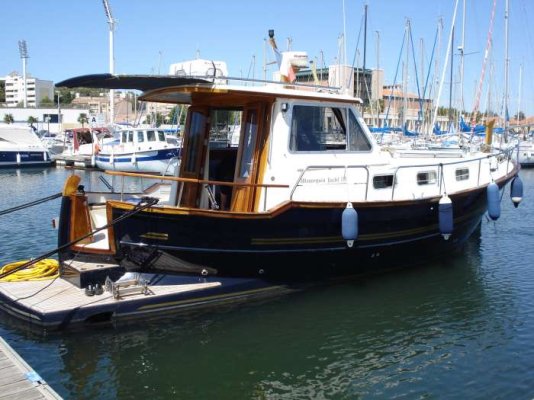I've spent time on a Broward with a hull extension. It did not have the rudders moved aft with handling in following seas an issue. But a Broward vs Mark's vessel are two different animals. The Nordhavn 55 was successfully stretched to a 60 with rudder moved 18" aft as I recall. Twisted would know for sure.
Mark's vessel could be made into a single engine, a proper FRP extension done and about 2/3 of the current fuel capacity built in with integral FRP hull tanks. Range would be about 700 miles with a reman 220 HP Cummins 6. About 3,500 pounds of ballast would would be required to compensate for the the removed iron. This would be a really great vessel for the open water especially with the addition of active stabilizers. Art's legacy designers in San Diego could pen this up in no time. And the extra cockpit and deck space could be used for many purposes. Now we're talking!




